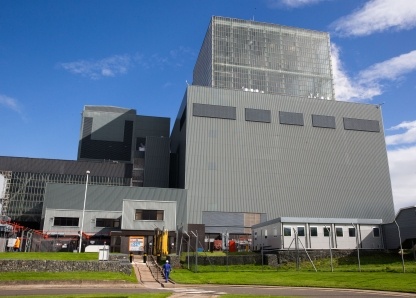Community update
5 March 2019
Dear SSG Member,
I wanted to write to you ahead of this week’s meeting of the SSG to share with you some further insight into the graphite inspection process.
As you will be aware there are a number of ways that we are able to monitor the condition of the graphite in our reactors.
While the unit is online we are able to use day-to-day control rod movements and the movement of fuel stringers during refuelling to gather information about the state of the graphite. This data helps us decide which channels we should go and look at in more detail during our inspection campaigns.
When we take the reactor offline for an inspection the way we are able to identify keyway root cracking is by using specialist equipment to film and take measurements of the inside of the graphite fuel bricks.
We do this by safely removing the fuel stringer from a channel then we pass a camera down the inside. Keyway root cracks are extremely narrow when they occur and this method allows us to observe very fine cracks, as small as 0.5mm wide; like the tip of a fine pen.
The camera’s field of vision is approximately 80 degrees so the equipment will make several passes up and down to ensure that the entire channel has been viewed. This takes approximately 30 minutes.
I understand it may be difficult to visualise easily what this footage may look like so I would like to share with you some of the video from the recent inspections. The videos we are sharing are representative examples of the kind of keyway root cracking we have observed during inspections.
You can view the footage by following the link below. Before you view the film I think it is important to set some context that you should bear in mind while watching:
- The footage shows a very small portion of a much larger structure. A graphite fuel channel is approximately 10m high and has an internal circumference of 825mm. The field of view of the footage is around 80 degrees so you can only see approximately 180mm of the channel.
- The NICIE camera films at close range; approximately 70mm from the surface of the graphite. This allows us to be able to detect the finest of cracks but much like taking a close-up photograph of a small insect; it can make the cracks appear larger then they would be to the naked eye.
- Cracks are around 1mm when first observed and they are opening very slowly. The average crack size is currently approx. 2mm and we have demonstrated in our safety cases that cracks up to a width of 10mm on the inside of the fuel channel (i.e. the bore) and 18mm on the outside of the fuel channel are acceptable.
- We are sharing footage from two channels; one in each reactor. They are representative of the kind of cracking we have observed.
- The Reactor 4 footage is from the 2017 inspections and shows a crack that had an average width of 1mm.
- The Reactor 3 footage is from the 2017 inspection campaign and then shows the same crack in the same channel in 2018. It shows a crack that had an average width of 1.1mm at first inspection and has grown by around 1.8mm to 2.9mm wide. It also shows an induced crack below the full height crack.
You can view the video here: Graphite Inspections at Hunterston B
I look forward to speaking to you at the Site Stakeholder Group meeting on Thursday 7 March at the Waterside Hotel.
Yours sincerely,
Dr Roddy Angus
Acting Station Director
For more information
Fiona McCall
External Communications Manager (Scotland)
(T) 01355 846281
(M) 07813 232 347
fiona.mccall@edf-energy.com
